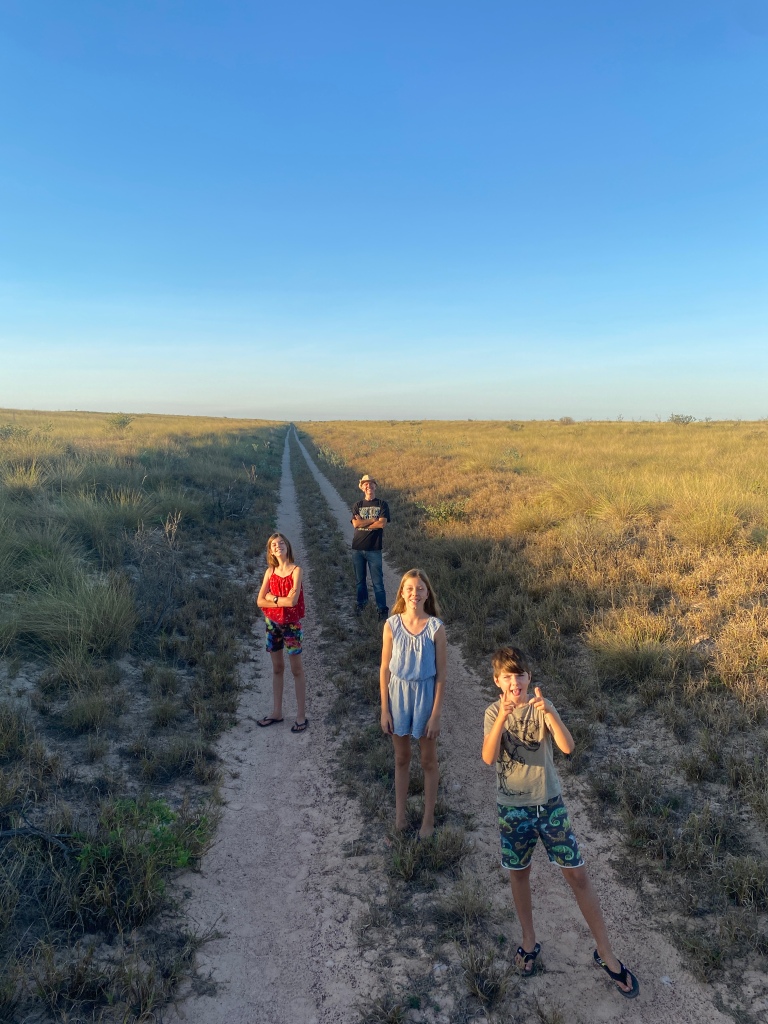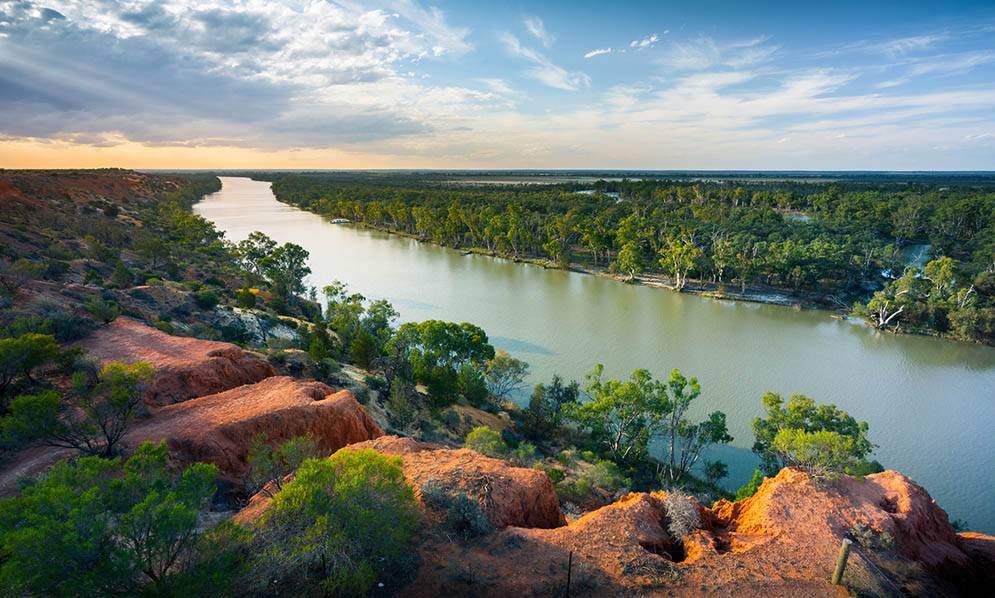One of the main motivations spurring me to travel Australia as a family was the unhurried time we would have together. Unfortunately, our visit to Ulura in early March would turn into a race I now regret.
But at least I went.
We had originally planned to make our pilgrimage to the rock later in the year when travelling the two thousand kilometres south from Darwin in the coolness of winter makes more sense. Yet, when we arrived unexpectedly in the wonderfully bizarre town of Coober Pedy in the centre of South Australia, we noticed Uluru was only about a third of that distance – so our plans changed. The Riley family would now make a dash for the red centre in the late summer heat, and (hopefully) be back in Coober Pedy in time for an impromptu speaking engagement at a church that weekend.
Up until our arrival in Coober Pedy the maximum distance we had travelled on any given day was only a few hundred kilometres. Our daily schedule consisted of a morning family walk, leisurely breakfast, a smidgeon of schooling for the kids, and then a tad of travel before we arrived at our next unplanned destination for an afternoon of exploration. So a 1,500km return race over 48-hours would test my energy levels and the children’s patience. Starting on Wednesday afternoon, this rushed excursion to the rock would leave the Rileys only enough time for a sunset and a sunrise, and hopefully an attempt to walk around Uluru’s perimeter. The plan was to then jump back in the Gypsy Express and hurtle back to Coober Pedy before the sun went down for Sabbath on Friday evening.
Late on our first afternoon of travel we pulled into Cadney Homestead on the Stuart Highway. The Roadhouse, still 600km from our destination, has a clean swimming pool – a vital feature at the end of a hot day. The campground was almost empty, as you would expect in Australia’s centre in late Summer. Normally, travellers sensibly wait for the cooler months before venturing in from the coast. At Cadney, we unexpectedly met up with an Italian couple living in Victoria who were the only other travellers we had seen on the Oodnadatta Track a few days earlier. As we chatted with the Italians about their plans to also head to Uluru a third car pulled into the campground. Big beaming smiles came through the windshield from two young Europeans backpackers who had camped near us in their rooftop tent at Ikara-Flinders Ranges. A few days previously I had cheekily chided them for their plans to drive south to Port Lincoln and miss out on seeing Uluru before they headed back to Europe. “How can you come to Australia and NOT visit the Rock?!” was my admonition, and it must have wormed its way into their thoughts. They had just driven over a thousand kilometres that day from the southern tip of the Eyre Peninsula, and providence would have them pull into the very same campground their tormenter was currently harassing Italians in. I felt excited they had listened to my travel advice, but I also felt an awkward pressure; “What if the rock disappoints them and they’ve travelled all this way because of my chiding?” I thought to myself. There would be no need to be concerned about Uluru’s ability to perform and impress.
We now had ourselves a three-vehicle convoy heading for the centre in the morning.
Border crossings in Australia shouldn’t be hurried or minimised. There are a only a half-dozen or so opportunities in this great southland to change time-zones and territories, so it should be treated as something special. Our vehicle should be stopped, and our complaining kids should be made to get out of the car. Photos up against signs saying “You Are Now Entering the State of ‘X’” should be taken. And these photos should then uploaded to social media sites in a not-so-subtle attempt to elicit envy from friends and work colleagues – and especially that brother-in-law who had laughed at your suggestion of taking a year off to do a Big Lap…but perhaps I’m digressing from this story…
The Northern Territory is an ancient land filled with real and mythical monsters. It’s a dreamtime that is still mid-dream in its creation. Entry into this land should require something a little more important than a banal “Look kids, there’s the sign for the NT”. So, the Riley family stood on the South Australian side of the dotted line holding hands, and on the count of three we jumped together into the Territory.
Yes, we really did do that.
For those who have pilgrimed to Uluru you will know there’s a sense of relief when you refuel your vehicle at the Eridunda Roadhouse. This fossil-fuel oasis at the intersection of the Stuart and Lasseter Highways whispers temptingly; “You’re close”. The toilet stop, the vat of deeply fried fast-food, and an enclosure of ravenous emus menacing your sandwich all somehow add to an already growing sense of expectation. As you squint down the Lasseter you’re aware that just along THAT road is an ancient sandstone monolith billowing out as a giant multi-hewed bubble from the surrounding desert. But THAT side-road down which the rock is promised is another three hours of driving away.
For rookie travellers to the rock the Lasseter Highway also comes with a soon-to-be-proven-wrong yelp of excitement. Every first-timer catches sight of Mount Connor jutting out of a flat horizon and mistakes it for Uluru. Locals refer to it as “Fool-uru”, and the presence of a rock ruse out here should be more widely known. The clue is in the name of the track that takes you there – Lasseter Highway. The road is named after a prospector who, almost a hundred years ago, said he had discovered a huge gold reef in central Australia, but couldn’t remember its location. Lasseter died out here trying to find his foolish dream, and Mount Connor has been fooling all those travellers coming after Lasseter.
Our three-car-convey pulled into Yulara in the middle of a hot Thursday afternoon, and then promptly complained about the high prices to camp. Yulara, the only permissable place for a traveller to rest within a reasonable radius of Uluru, is now one of the largest towns in the Northern Territory. The town exists purely to keep pilgrimages like mine to some form of decorum and respect of a sacred site. But decorum and respect have a price, and the cost is not middle-of-nowhere cheap.
The Riley team completed a Formula One-quick unhitch of the caravan, and sprinted our dust-covered Landcruiser the twenty minutes south to the red centre’s star attraction. I glanced regularly in the rear mirror to check the progress of the Italian’s rented van, and also the held-together-by-sticky-tape-but-at-least-it-has-a-tent-on-the-roof vehicle the backpackers were driving. I hoped I didn’t lose them, but knew if I did I wasn’t going to stop – a setting sun upon the rock waits for no mortal.
I feel like I’m a latte-sipping stereotype of a soft, city-dwelling southerner when I write about the deep experience of standing before Uluru, but where is my (decaf) coffee cup? There is something about the permanence and majesty of any striking rock formation that prompts me to think about my own brief existence in this land. But Uluru doesn’t need any kind of unusual shape or unique form to strike you. Uluru simply is. When you look into its changing hues you feel like you’re staring into eternity. The Apostle Paul might have described it as “looking through a glass, but darkly”* when he wrote about catching a glimpse of another Rock only two thousand years ago.
So, with my wife, the three quirky Riley kids, a couple of convoying Europeans, and five million flies, I paid my respects to the Pitjantjatjara people – a custodian nation who have cared for the significance of this giant slice of sandstone ever since a moment slightly after the creation of time. Also, I paid my respects to their Creator.
A moment like this requires confession: “I’m fifty-two years old,” I said to Jasper, the Dutch half of the sticky-taped backpacker-mobile, “and I can’t believe it’s taken me this long to come.”
Yes, I was late. But at least I came.
To be continued…(my next Reverential Ramble will describe the Rileys’ journey south to the Eyre Peninsula and then west across the Nullarbor to the hermit kingdom of Western Australia. Subscribe to get future Rambles direct to your inbox).
(* The Apostle Paul’s quote comes from his first letter to the Corinthian church – chapter 13, verse 12)

***
About this blog: Pastor David Riley is a minister of the Seventh-day Adventist Church, and is taking a sabbatical year (or two) to drag his family around Australia in a caravan. This article is from his “Reverential Ramblings” series that meanders around a series of subjects pondered and stuff seen. You can subscribe to this blog by clicking “follow”.






































